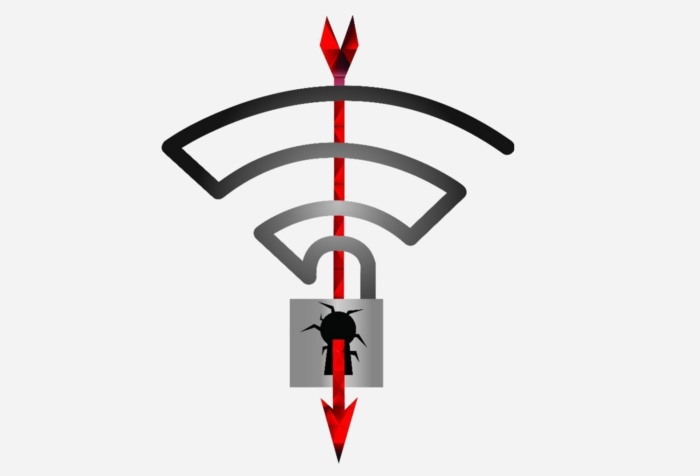
The encryption within WIFI routers, WPA2, which protects users’ privacy online, has been decoded by cyber criminals leaving millions of users at risk.
A security flaw, dubbed KRACK, which stands for Key Reinstallation Attacks, targets WIFI Protected Access II (WPA2) in order to access secure networks. WPA2 is the encryption technique that authenticates the system for secure wireless connections, and uses algorithms that are designed to protect the privacy of online users.
It’s this algorithm process that has been targeted and decoded, which means any cybercriminal within the range of any WPA2 wireless router can watch your every move online. The scary thing is that almost all home users and businesses use WPA2.
The specific process that has been targeted is called a ‘handshake’, which is an automatic relationship between devices in a network, establishing a rule for communication between foreign devices and the router. This could be anything from a printer, to a server or smart phone.
The handshake creates an established connection with the home network for the foreign device to use the network. The WPA2 uses a four-way handshake to establish an encrypted key.
The security flaw makes it possible for the attackers to monitor Wi-Fi traffic passing between computers and access points, and they may also be able to inject and manipulate data depending on the network configuration.
The US Computer Emergency Readiness Team (US CERT) issued warnings on the vulnerability, saying that most or all will be affected, and there are concerns that all systems will need to be patched.
Mark James, ESET IT Security Specialist, discusses the implications of a cybersecurity breach of this magnitude, and the problems with restoring routers to a safe and secure mode of use.
“In 2001 the Wi-Fi security protocol WEP was cracked, and soon deemed unsafe to use to keep your data and indeed networks safe from prying eyes. Here we are 16 years later, and it appears WPA2 is going the same way.
“WPA2 is currently the recommended option for securing your WI-FI network.
“The flaw, if successful, and if you’re not using any other advanced features including VPN, encrypted data, etc, could enable a hacker to eavesdrop on your data and or possibly gain access to any unsecured shares available on the same network.
“One of the biggest concerns here, is getting routers patched.
“Firstly getting the average user to check and apply any firmware updates, and secondly some older routers may not even have a patch available.
“The average household would acquire an auto-configured router install it and forget about it until possibly they change their internet provider, where they may go through the same procedure.
“Too many people never check or implement router updates as it’s something often too complicated for the home user to be involved in.
“This certainly highlights the need for additional safety precautions.
“Always, where possible, password protect your network resource shares, even if you don’t think anyone else would normally access it, after all it’s not the ones you know about that are the problem.
“If you can use a VPN to secure any private or financial traffic that should secure your data from prying eyes.
“This can, and is, being patched quite easily and is an excellent example of the importance of installing patches and updates as soon as they are available. As this flaw affects so many devices be extra vigilant about updating ASAP, and remember to check router firmware updates if needed.”
Have you patched your router? Let us know on Twitter @ESETUK.
Join the ESET UK LinkedIn Group and stay up to date with the blog. If you are interested in seeing where ESET has been featured in the news then check out our ‘In the news’ section.